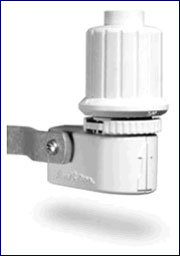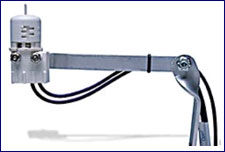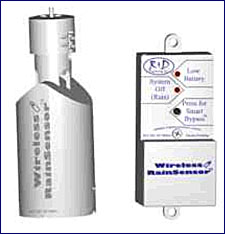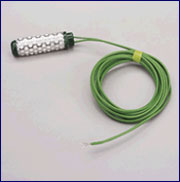Imagine that you go away for a few days of vacation. While you are away it rains cats and dogs at your home, but your irrigation system is programmed to water. Since you aren’t there to stop it, a lot of water is wasted irrigating a landscape that doesn’t need it! Sound familiar? This problem repeats itself again and again all over the U.S.
A rain shutoff device or a soil moisture sensor can take care of this problem and improve overall irrigation management. These products are inexpensive ($25 – $250) and easy to install on just about any sprinkler clock.
Rain shutoff devices and soil moisture sensors have been proven to save water and money. Some cities, such as Cary, North Carolina now require one of these devices to be installed on all new sprinkler systems.
Rain shutoff device and soil moisture sensors differ in how they control irrigation, so they are described separately below.
Rain Shutoff Devices
A rain shutoff device (also called a rain sensor) is designed to halt irrigation in response to rainfall. Most rain sensors are adjustable and allow you to specify the amount of rain that must fall before irrigation is stopped.
A number of rain shutoff products are available and they are all compatible with almost all sprinkler clocks. Some examples of these devices are shown here in Figures 1 – 3.

Figure 1
The device itself is installed in a clear location where it can receive the full amount of rain that falls without excessive splashing. Typically the sensor is placed on a roof or the side of a building near the irrigation controller so that the wires can be easily run from the sensor to the clock. It is important to check the sensor frequently to make sure it isn’t fouled by leaves, debris, or even bird droppings.

Figure 2
These rain shutoff devices work using a basic principal of electric circuits. When sufficient rainfall is received at the sensor, the common/ground connection is interrupted effectively overriding the irrigation clock. Irrigation resumes when the sensor dries and the common/ground connection is restored.

Figure 3
A soil moisture sensor system works with your irrigation system like a thermostat works with your furnace. The thermostat turns on your furnace when the temperature drops below set temperature and turns it off when the desired temperature has been achieved.
Similarly, a soil moisture sensor system measures the level of moisture in the soil and halts irrigation if the soil is wet or permits irrigation if the soil is dry.
There are a variety of soil moisture sensor systems on the market at different price levels. A good system should include sensors and a controller that allows you to set the moisture level at which you want to stop and start irrigation. You should be able to get a good quality soil moisture sensor system for $250 or less. An example of a soil moisture sensor is shown in Figure 4.

Figure 4
The soil sensors (usually a pair) are installed at mid-root depth in a representative portion of you landscape that is only watered by a single irrigation zone. A pair of wires are run underground from the sensors back to the sensor controller, which is usually placed next to the irrigation controller. The wiring at the controller is quite similar to a rain sensor and the common/ground connection is used to override irrigation.
A soil moisture sensor system is a more difficult to install than a rain sensor only because wires must be run from the sensors in the ground back to the clock. A competent do-it-yourselfer should have minimal trouble installing a basic soil moisture sensor system.
Which System is Right for Me?
If you take the time to frequently re-program and start and stop your irrigation system, then a rain shutoff device probably makes the most sense. A rain shutoff device is less of an overall irrigation management tool and more of a convenience product that stops you from wasting water when it rains. A rain shutoff device works well in conjunction with conscientious irrigation management.
If don’t like to re-program your sprinkler clock and prefer a system that does more of the irrigation management for you, then a soil moisture sensor system is probably the right choice. These devices control irrigation in such that there is always sufficient moisture in soil at the roots.
If the ground is already wet the soil moisture sensor system will override the irrigation system and prevent watering. If the soil is dry the sensor system will permit irrigation until the desired saturation level is reached.
Soil moisture sensors are not an “install and forget about it” type of product. You still need to carefully monitor the performance of your sprinkler system and the condition of your landscape and make adjustments to the sensor controller and your irrigation timing.
However, once these systems are properly tuned they should eliminate a lot of the system management work. Although this systems can commonly become out of tune and do require a fair amount of attention and retuning.
- Hiring a Landscape Professional - January 19, 2017
- Water-Wise Plant Materials - January 13, 2017
- Water-Wise Plants Timing and Seasonality - January 13, 2017
